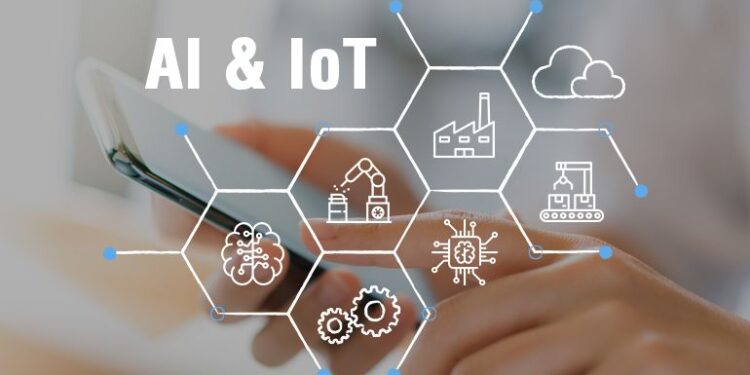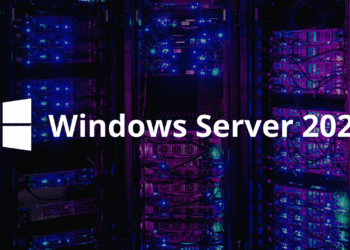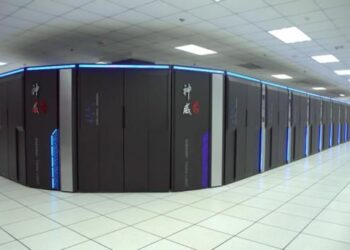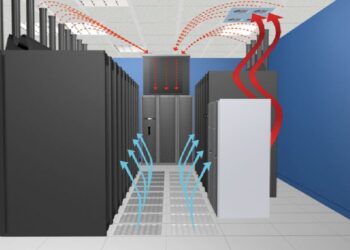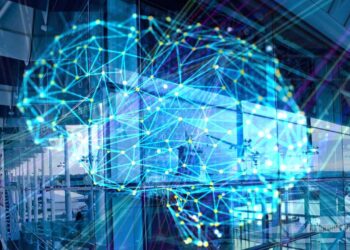Artificial Intelligence (AI) has rapidly transformed the technology landscape, and its impact on server infrastructure is undeniable. In today’s digital era, modern servers are not just physical hardware components; they have evolved into sophisticated, intelligent systems that support a myriad of applications from cloud computing to real-time data analytics. This article explores the integration of AI into modern servers, discusses its benefits and challenges, and highlights real-world applications and future trends. By providing a comprehensive look at the topic, we aim to equip IT professionals, data center managers, and technology enthusiasts with valuable insights into how AI is reshaping server technology.
The convergence of artificial intelligence and server technology has sparked a revolution in the way data centers operate. With the exponential growth of data and increasing demands for efficiency, modern servers are embracing AI to enhance performance, automate processes, and optimize resource management. The integration of AI not only transforms server management but also drives innovation in areas like predictive maintenance, workload optimization, and energy efficiency. In this article, we delve into the transformative role of AI in modern servers, examining its evolution, benefits, implementation challenges, and promising future.
The Evolution of Server Technology
Traditionally, servers were static machines primarily designed for storage and processing tasks. Over the years, rapid advancements in hardware, network connectivity, and software have led to the development of highly efficient, scalable, and intelligent systems. Key milestones in this evolution include:
- Virtualization: Allowing multiple virtual servers to run on a single physical machine, maximizing resource utilization.
- Cloud Computing: Providing on-demand access to server resources over the internet, which increased flexibility and scalability.
- Edge Computing: Bringing computational power closer to the data source, reducing latency and enhancing real-time processing.
As these innovations took shape, the need for smarter management tools became evident. This is where AI comes into play, providing the intelligence needed to manage complex server ecosystems efficiently.
Understanding AI Integration in Servers
AI integration in modern servers involves embedding machine learning algorithms and data analytics into server systems to enable real-time decision-making and automation. This integration is not a mere add-on but a fundamental shift in how servers operate. Some key aspects include:
A. Enhanced Automation
AI-driven automation reduces the need for human intervention in server management. Algorithms monitor performance metrics, detect anomalies, and automatically adjust system parameters. This minimizes downtime and improves overall efficiency.
B. Predictive Maintenance
Using historical data and real-time analytics, AI can predict hardware failures before they occur. This proactive approach ensures timely maintenance, reducing the risk of unexpected outages.
C. Intelligent Resource Allocation
AI algorithms optimize resource allocation by analyzing workload patterns and dynamically distributing resources where they are most needed. This ensures optimal performance and cost efficiency.
D. Improved Security
Modern servers face an ever-growing range of security threats. AI can detect and respond to suspicious activities by learning normal patterns of behavior and flagging anomalies. This results in a more robust security framework that adapts to emerging threats.
Benefits of Integrating AI into Modern Servers
The adoption of AI in server technology brings forth a myriad of benefits that extend from operational efficiency to enhanced security. The following sections detail some of the primary advantages:
A. Optimized Performance and Efficiency
One of the most significant advantages of AI integration is the ability to optimize server performance. AI systems continuously analyze data on server loads, response times, and other performance metrics. This data-driven approach leads to:
A. Dynamic Load Balancing:
AI algorithms distribute workloads evenly across servers, ensuring that no single server is overburdened. This minimizes latency and enhances response times.
B. Energy Efficiency:
By optimizing the use of resources, AI helps reduce energy consumption. For instance, AI can power down underutilized servers during periods of low demand, leading to significant energy savings.
C. Scalability:
AI integration enables servers to scale automatically based on workload demands. This means that during peak usage times, additional resources are deployed seamlessly, ensuring continuous performance without manual intervention.
B. Enhanced Data Analytics and Decision Making
Modern servers generate vast amounts of data, which can be overwhelming without intelligent analysis. AI leverages machine learning to turn raw data into actionable insights. Benefits include:
A. Real-Time Monitoring:
AI systems can analyze data in real time, providing immediate insights into performance, security, and operational issues.
B. Strategic Planning:
Long-term data analysis helps in strategic planning, from capacity planning to the identification of trends that may affect future performance.
C. Optimized Operations:
Insights derived from data analytics guide decision-making in operations, ensuring that servers are always configured for maximum efficiency.
C. Robust Security and Threat Mitigation
Security remains a top priority in any IT infrastructure. AI integration enhances server security through several mechanisms:
A. Anomaly Detection:
AI monitors network traffic and server behavior, detecting unusual patterns that may indicate cyber threats or breaches.
B. Automated Response:
When a threat is identified, AI can initiate immediate countermeasures, such as isolating affected systems or triggering alerts for further investigation.
C. Continuous Learning:
AI systems learn from each incident, continually updating their threat detection algorithms to recognize and neutralize new threats more effectively.
D. Cost Reduction and Operational Savings
The financial benefits of AI integration are substantial. By automating routine tasks and optimizing resource usage, organizations can achieve significant cost savings:
A. Reduced Downtime:
Predictive maintenance and intelligent monitoring reduce unexpected downtime, which can be costly in terms of lost revenue and repair expenses.
B. Lower Energy Costs:
Energy-efficient server management leads to reduced power consumption and lower utility bills.
C. Minimized Manual Intervention:
Automation decreases the need for manual oversight, thereby reducing labor costs and allowing IT staff to focus on more strategic initiatives.
Key Technologies Driving AI Integration
The successful integration of AI into modern servers is made possible by a combination of advanced technologies. These technologies work together to create intelligent, adaptive systems that can handle the complexities of modern data centers.
A. Machine Learning and Deep Learning
Machine learning (ML) is the backbone of AI integration in servers. ML algorithms analyze historical data and learn to predict future outcomes. Deep learning, a subset of ML, uses neural networks with multiple layers to process complex data sets. These technologies empower servers to:
- Analyze large volumes of data quickly and accurately.
- Identify patterns and trends that are not immediately apparent.
- Improve decision-making processes by learning from past performance.
B. Edge Computing
Edge computing brings computation and data storage closer to the data source. This reduces latency and improves real-time processing capabilities. When combined with AI, edge computing allows servers to make rapid decisions without relying on centralized cloud-based systems. Benefits include:
A. Faster Response Times:
Reduced latency enables immediate reaction to real-time events, essential for applications like autonomous vehicles and smart cities.
B. Improved Reliability:
Decentralized processing minimizes the risk of single points of failure, enhancing overall system reliability.
C. Cloud Computing
Cloud computing has redefined the way resources are allocated and managed. With the integration of AI, cloud platforms can offer advanced analytics, resource optimization, and security features. Cloud-based AI services enable organizations to:
- Scale resources on-demand.
- Access sophisticated AI tools without significant upfront investments.
- Benefit from continuous updates and improvements in AI algorithms.
D. Internet of Things (IoT) Integration
The proliferation of IoT devices has added another layer of complexity to server management. AI plays a critical role in processing and analyzing data generated by these devices. Through AI integration, servers can:
- Manage and process large volumes of IoT data in real time.
- Detect and respond to issues across a distributed network of devices.
- Provide insights that enhance the efficiency and functionality of IoT systems.
Challenges and Considerations in AI Integration
While the integration of AI in modern servers offers tremendous benefits, it also presents several challenges and considerations. Organizations must navigate these obstacles to fully leverage the potential of AI.
A. Data Privacy and Security
AI systems require vast amounts of data to function effectively. This raises significant concerns regarding data privacy and security. Organizations must ensure that data is handled in compliance with regulatory standards and that robust security measures are in place. Key considerations include:
A. Compliance with Regulations:
Adhering to data protection laws such as GDPR or CCPA is crucial when integrating AI.
B. Secure Data Storage:
Ensuring that data is stored securely and access is controlled prevents unauthorized access and breaches.
C. Ethical Data Usage:
Organizations need to establish clear guidelines for the ethical use of data to build trust with customers and stakeholders.

B. Integration Complexity
Merging AI systems with existing server infrastructures can be complex. Legacy systems may not be designed to support modern AI algorithms, requiring significant upgrades or complete overhauls. The following strategies can help mitigate integration challenges:
A. Incremental Upgrades:
Gradually integrating AI components into the existing infrastructure can minimize disruption and allow for smoother transitions.
B. Hybrid Solutions:
Implementing hybrid systems that combine traditional servers with AI-enhanced modules can offer a balanced approach.
C. Cross-Department Collaboration:
Involving IT, data science, and operations teams ensures that all perspectives are considered during integration.
C. Cost Implications
While AI integration promises long-term savings, the initial investment can be substantial. Upgrading hardware, acquiring new software, and training personnel all contribute to higher upfront costs. Organizations should conduct thorough cost-benefit analyses to ensure that investments are justified by future gains.
D. Skill Gaps and Training
The adoption of AI technologies requires specialized skills that may not be readily available within an organization. Investing in employee training and hiring skilled professionals are essential steps to bridge this gap. Consider the following measures:
A. Professional Development Programs:
Offering training programs to upskill existing staff can help in adapting to new technologies.
B. Collaborations with Academia:
Partnering with educational institutions for research and training can create a pipeline of skilled professionals.
C. Hiring AI Specialists:
Bringing in experts with experience in machine learning and AI integration can accelerate the adoption process.
Implementation Strategies and Best Practices
Successfully integrating AI into modern servers requires a strategic approach. Organizations must plan carefully and adopt best practices to ensure a smooth transition. The following guidelines can help in implementing AI solutions effectively:
A. Define Clear Objectives
Before initiating any integration project, organizations must clearly define their goals. Whether it is to reduce downtime, optimize resource allocation, or enhance security, having well-defined objectives will guide the entire process.
B. Conduct a Comprehensive Assessment
Assessing the existing infrastructure is critical. Organizations should evaluate hardware capabilities, software compatibility, and network architecture to determine the feasibility of AI integration.
C. Develop a Phased Implementation Plan
A phased approach allows for gradual integration and minimizes operational disruptions. A suggested roadmap may include:
A. Pilot Projects:
Start with small-scale projects to test AI capabilities in a controlled environment.
B. Incremental Rollouts:
Gradually expand the integration based on lessons learned from pilot projects.
C. Full-Scale Deployment:
Once the system has been refined and proven effective, deploy the AI-enhanced solutions across the entire infrastructure.
D. Invest in Training and Support
Ensure that the technical team is well-versed in the new technologies. Continuous training and a robust support system are essential to address any issues that may arise during and after integration.
E. Monitor, Evaluate, and Iterate
Post-deployment, it is vital to continuously monitor the system’s performance. Regular evaluations can identify areas for improvement, and iterative updates ensure that the system remains optimized over time.
Real-World Applications and Case Studies
The integration of AI in modern servers is not just a theoretical concept; numerous organizations have successfully implemented these technologies to transform their operations. Below are some illustrative examples:
A. Data Centers and Cloud Providers
Major cloud service providers have incorporated AI to optimize server performance and energy consumption. For instance:
A. Automated Resource Scaling:
Cloud providers use AI to analyze usage patterns and adjust resource allocation dynamically, ensuring that servers operate at peak efficiency.
B. Predictive Maintenance Systems:
Advanced analytics help detect potential hardware issues, allowing for maintenance before a failure occurs. This proactive approach minimizes downtime and reduces repair costs.
B. Financial Institutions
Banks and financial institutions rely heavily on secure, high-performance servers to process transactions and manage customer data. AI integration in these environments has led to:
A. Fraud Detection:
AI algorithms continuously monitor transactions to identify suspicious activities, significantly reducing fraud risks.
B. Optimized Transaction Processing:
By analyzing transaction patterns, AI can optimize server loads, ensuring smooth operations even during peak periods.
C. E-Commerce Platforms
Online retailers depend on robust server infrastructures to handle large volumes of traffic and transactions. AI has enabled these platforms to:
A. Enhance User Experience:
Intelligent load balancing and real-time analytics ensure that customers experience minimal latency during peak shopping periods.
B. Personalize Content Delivery:
AI analyzes user behavior to deliver personalized recommendations, boosting engagement and sales.
D. Healthcare Providers
In the healthcare sector, servers manage sensitive patient data and support real-time diagnostics. AI integration has improved:
A. Data Security and Compliance:
AI systems monitor access patterns to ensure that sensitive information is protected in compliance with healthcare regulations.
B. Faster Data Processing:
Rapid data analysis facilitates quick decision-making in critical situations, enhancing patient care outcomes.

The Future of AI in Server Technology
As technology continues to evolve, the role of AI in server infrastructure is poised to grow even more significant. Looking ahead, several trends and innovations are likely to shape the future of AI integration:
A. Advancements in AI Algorithms
Ongoing research in machine learning and deep learning promises to yield even more efficient algorithms. These advancements will enable servers to process complex tasks faster, leading to smarter and more responsive systems.
B. Greater Convergence with IoT and Edge Computing
The fusion of AI with IoT and edge computing will drive innovation in real-time data processing. As devices become more interconnected, servers equipped with AI capabilities will be essential for managing distributed networks and ensuring seamless operations.
C. Increased Emphasis on Cybersecurity
With cyber threats evolving constantly, the integration of AI for enhanced security will be a critical area of focus. Future servers will likely incorporate more advanced AI-driven security protocols to preempt and counter sophisticated attacks.
D. Sustainable and Energy-Efficient Solutions
Environmental concerns and rising energy costs are pushing the technology industry toward sustainable solutions. AI will continue to play a pivotal role in reducing energy consumption and optimizing server operations for environmental efficiency.
E. Expansion of AI-as-a-Service
Cloud-based AI services are becoming increasingly popular, allowing organizations to leverage sophisticated AI tools without heavy investments in infrastructure. This trend is expected to democratize access to AI, making it a standard feature in server management across industries.
Conclusion
The integration of AI into modern servers marks a pivotal moment in the evolution of IT infrastructure. By embedding intelligent algorithms and data analytics into server systems, organizations can achieve unparalleled levels of performance, efficiency, and security. From dynamic load balancing and predictive maintenance to advanced cybersecurity measures and energy optimization, AI is revolutionizing the way servers operate in today’s fast-paced digital landscape.
As we have explored in this article, the benefits of AI integration are vast and varied, yet the journey is not without its challenges. Issues such as data privacy, integration complexity, and the need for specialized skills require careful planning and strategic implementation. However, with a phased approach, continuous monitoring, and ongoing investments in training and support, these challenges can be effectively managed.
Looking forward, the future of AI in server technology is bright. With continuous advancements in AI algorithms, the convergence with emerging technologies such as IoT and edge computing, and an increased focus on sustainability and security, the next generation of servers will be more intelligent, adaptive, and resilient than ever before.
For businesses and technology professionals, embracing AI integration is not just a trend—it is a strategic imperative that will drive innovation, enhance operational efficiency, and create a competitive edge in an increasingly data-driven world.

